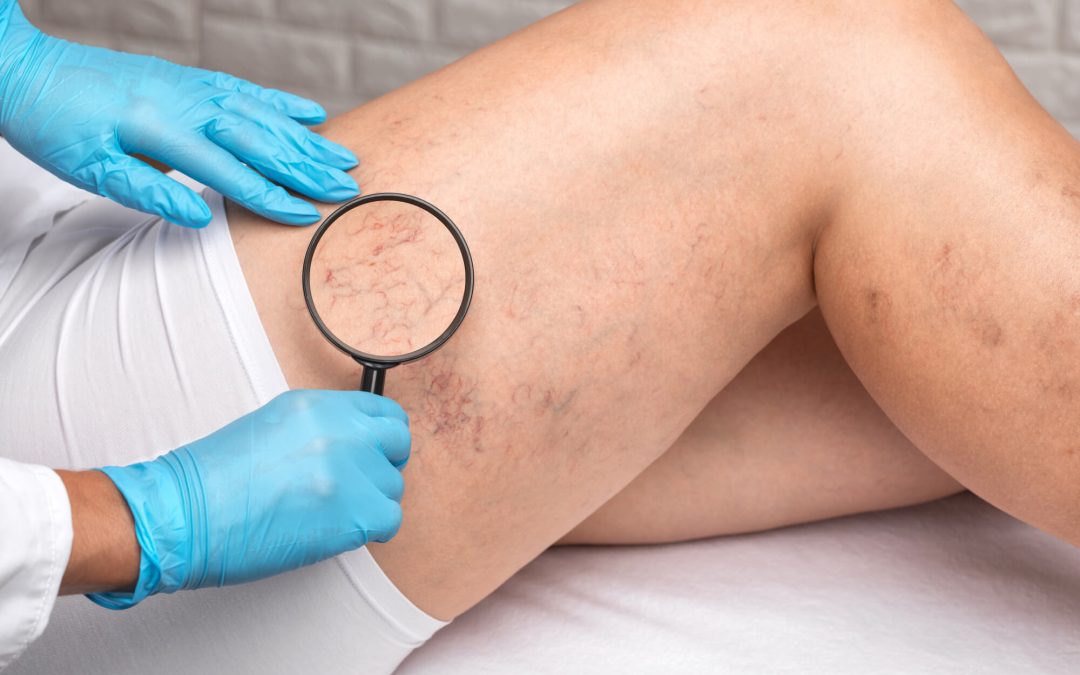What is venous disease?
Venous disease is any condition that affects the veins in your body. Veins are flexible, hollow tubes that are part of the circulatory system that moves blood through your body. Veins bring oxygen-poor blood back to your heart, which pumps your blood. Arteries carry oxygen-rich blood away from your heart.
Veins have flaps (valves) inside that open when your muscles contract. This allows blood to move through your veins. When your muscles relax, the valves close, keeping blood flowing in one direction.
If venous disease damages the valves inside your veins, the valves may not close completely. This lets blood leak backward or flow in both directions
Types of venous disease
- Blood clots: These can happen in your legs, arms, veins of your internal organs (kidney, spleen, intestines, liver and pelvic organs), in your brain (cerebral vein thrombosis), in your kidneys (renal vein thrombosis), or in your lungs (pulmonary embolism).
- Deep vein thrombosis: (DVT): This is a blood clot that occurs in a deep vein (including arms and legs). Deep vein thrombosis itself isn’t life-threatening. However, the blood clot has the potential to break free and travel through the bloodstream, where it can stick in your lung’s blood vessels and become a pulmonary embolism. This can be a life-threatening condition.
- Superficial thrombophlebitis: This is a blood clot that develops in a vein close to the surface of your skin. These types of blood clots don’t usually travel to your lungs unless they move from your superficial system into your deep venous system first. Typically, however, they cause pain.
- Chronic venous insufficiency: This condition causes pooling of blood, chronic leg swelling, increased pressure, increased pigmentation or discoloration of your skin, and leg ulcers known as venous stasis ulcers.
- Varicose and spider veins: These are abnormal, dilated blood vessels that happen because of weakening in your blood vessel wall.
- Venous ulcers: Ulcers are wounds or open sores that won’t heal or keep returning. Venous stasis ulcers most commonly occur below your knee, on the inner part of your leg, just above your ankle.
- Arteriovenous fistulas: These are arteries and veins that connect to each other directly, with nothing in between. This is abnormal.
What are the symptoms?
Venous disease symptoms include these issues in your legs or arms:
- Pain, cramping or discomfort.
- Redness or warmth.
- Heaviness.
- Itching or burning feeling.
- Swelling.
- Bulging veins.
What causes venous disease?
Venous disease causes include:
- Issues with how your veins formed when you were born.
- Injury.
- Other venous diseases.
- Weak blood vessel walls because of pregnancy, aging, cysts or tumors.
- High blood pressure.
What are the risk factors for venous disease?
Risk factors for venous disease include:
- Family history of venous disease.
- Pregnancy.
- Having a BMI (body mass index) greater than 30.
- Being a woman or assigned female at birth (AFAB).
- Sitting or standing for long periods of time.
- Taking birth control pills or hormone replacement therapy.
- Using tobacco products.

